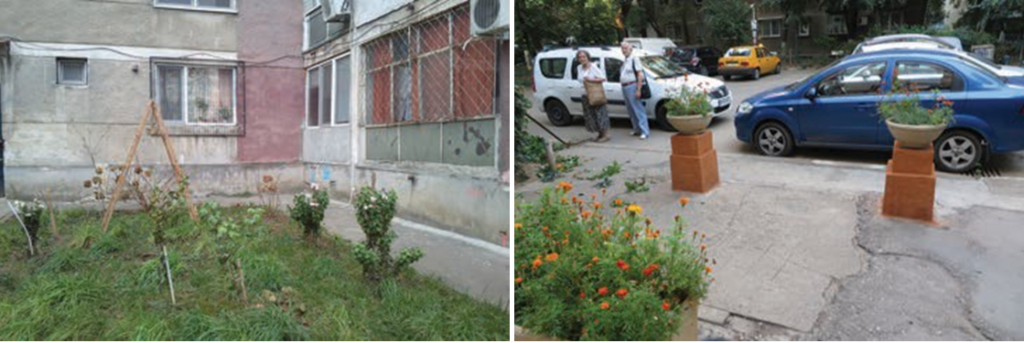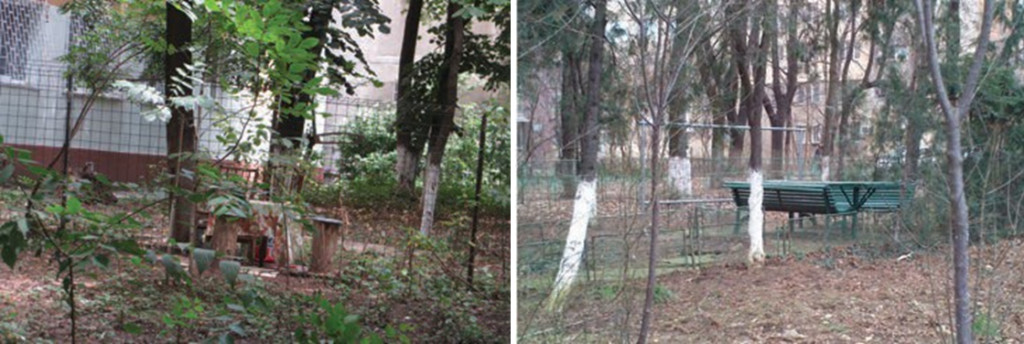Maria Alexandrescu

Drumul Taberei is a neighborhood in Bucharest, Romania, constructed from 1966 through 1974. With 60,000 dwelling units, it currently stands as one of the city’s densest areas. Drumul Taberei was planned to include many green spaces between buildings, integral transportation networks, and a large park. From a satellite image, one can pick out right away the u-curve of the street after which it is named, as well as the dark green color among its building slabs. It is one of Bucharest’s greenest neighborhoods.


Around the collective housing blocks are collective yards, though it is unclear how these semi-public, in-between spaces are managed; indeed, many of the trees and plants were brought there by the residents—a number of whom had been displaced from villages following forced collectivization and urbanization of rural areas.
Prior to the fall of the Communist regime in 1989, these green spaces belonged to the people, in accordance with party ideology. But to whom do they belong now? Many of the areas were claimed by residents of the ground floors who saw it as an opportunity to reconnect with pre-socialist relations to the land. And so the fences went up, and behind them lawns, rose gardens, small vegetable plots. The fences are perhaps only a small part of the spontaneous interventions that dot the former collective space, though they are also the most visible. But apart from the fences, there are benches in front of buildings, shaded tables used for drinking and board games—areas for gathering and spending time.


Apart my grandparents moved to Drumul Taberei in 1970, I would spend my summers playing and exploring its park. In 2013, the park was closed for renovation. Among the trees there appeared large, heavy steel frames, and artificial hills. Until then, I had to find another place to walk. Rather than walk through the neighborhood only to get to the park, I made the neighborhood itself the destination of my walks. Between the buildings, the yards had about as many trees, as many areas of vegetation, as many benches as the park. Of course, since the neighborhood was large, there were also a number of smaller parks within, as well as churchyards, schoolyards, and barren lots. But, when considered with the interventions in the former collective in-between spaces, was the difference between the neighborhood and the park really that great?
